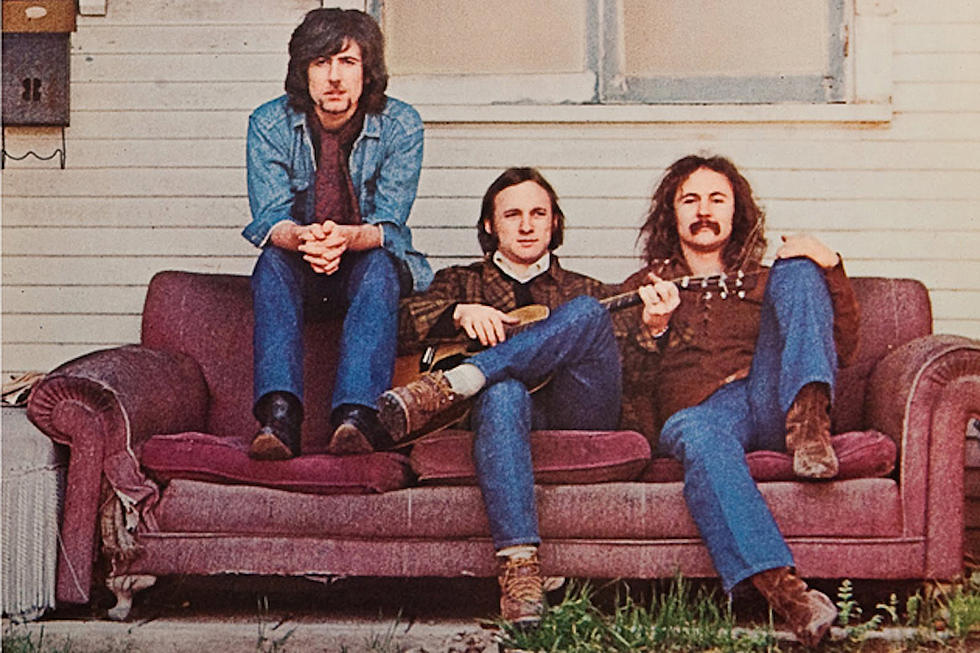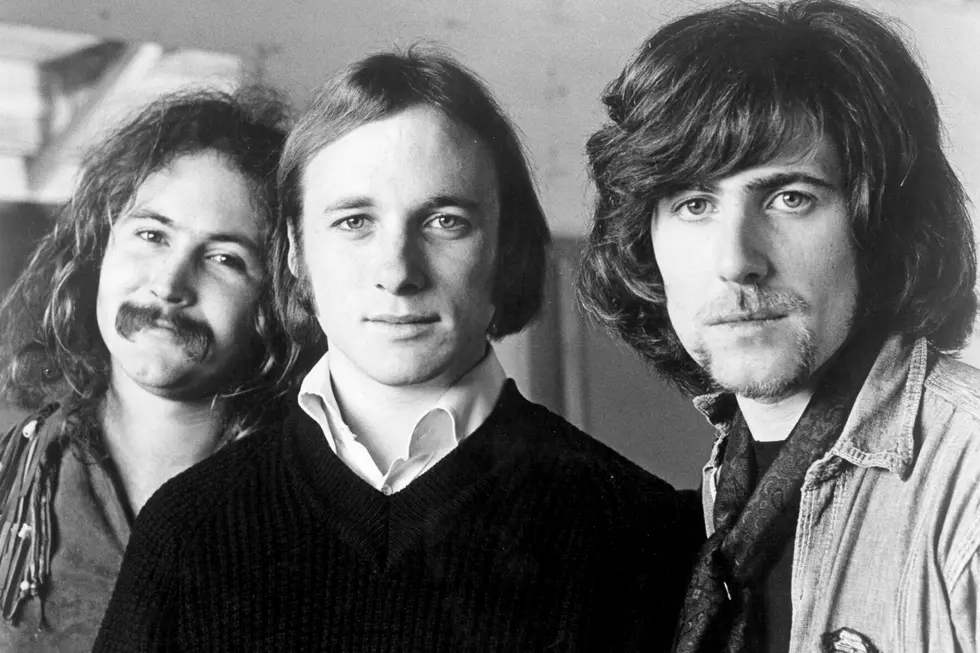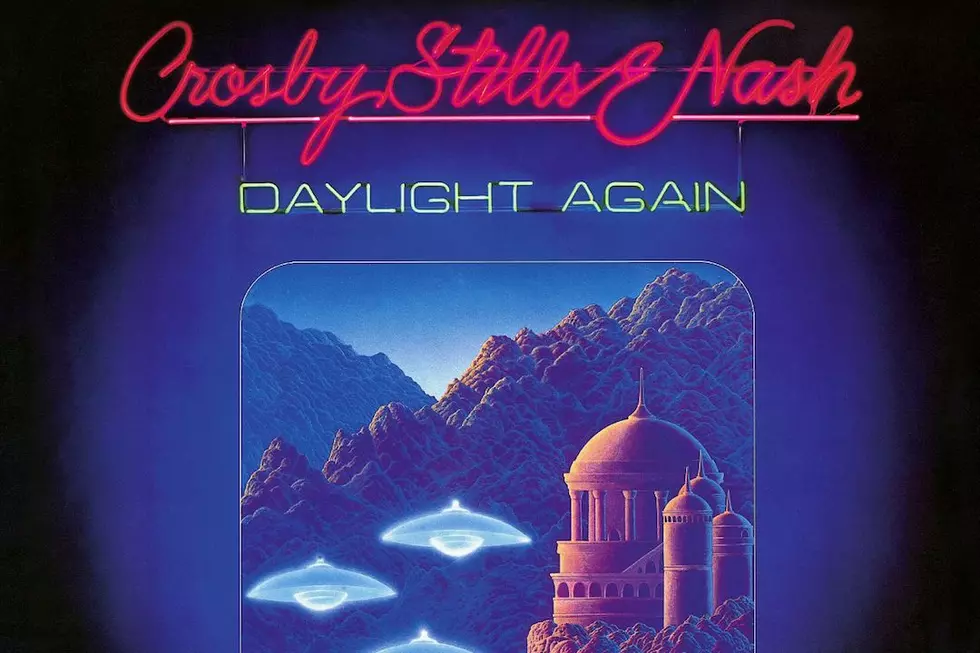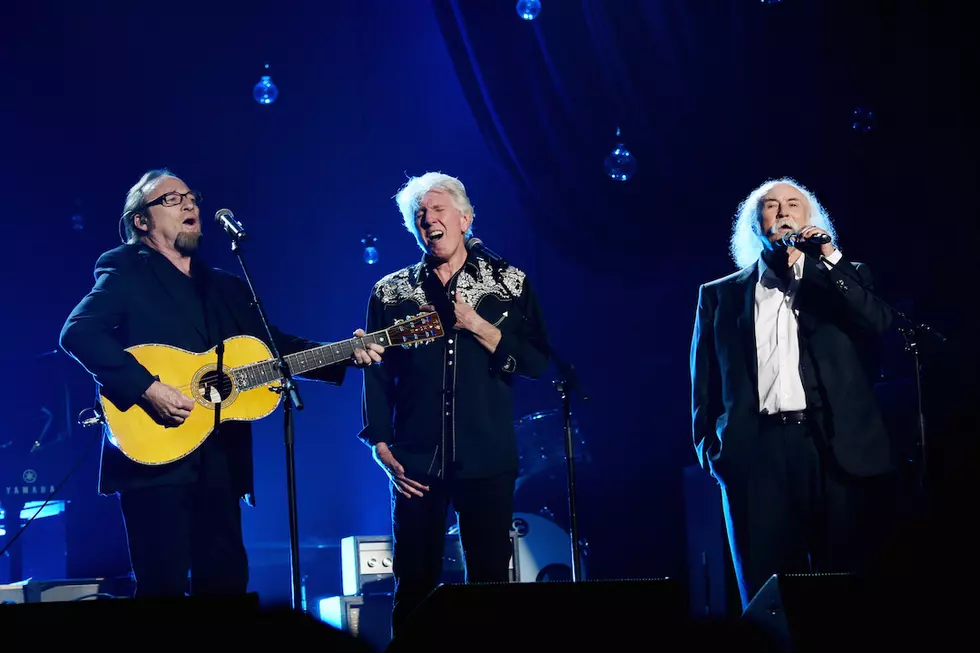
When Crosby, Stills and Nash Came Together for a Classic Debut
Crosby, Stills and Nash were rock music’s first true supergroup, the near-perfect distillation of the vibrant Southern California folk-country-rock sound of the late-'60s. Their self-titled debut, released on May 29, 1969, remains one of the rare records that lived up to the hype around it.
The first meeting between David Crosby, Stephen Stills and Graham Nash could be chalked up to being at the right place at the right time.
Crosby, a singer with the Byrds, was familiar with Stills – then of Buffalo Springfield fame – from bumping into each other frequently around the L.A. scene. Crosby had even sat in with Buffalo Springfield for a missing Neil Young at the Monterey Pop Festival in 1967. Now, Springfield was done, and the Byrds had kicked Crosby to the curb.
In July 1968, the two men happened to run into each other at a party at singer Mama Cass’ home and began to jam on Stills’ song "You Don’t Have to Cry." Nearby, the Hollies’ singer Graham Nash heard what they were doing, sauntered over and asked the two men to play their tune again.
“Stephen and I looked at each other and said, 'OK, sure,' and we sang it again," Crosby recalled. "When we were done, Nash said, 'Can you do that one more time? Just one more time.' The third time we sang it, Nash joined in and added a top harmony line. It was amazing! It really was."
Listen to Crosby, Stills and Nash's 'Suite: Judy Blue Eyes'
For Nash, the chemistry was apparent. “I am a harmony singer. David Crosby is a harmony singer. Stephen Stills is a harmony singer. We know what we're doing,” he later explained. “There was something about us singing together that was magic, and we all recognized it immediately." Stills, agreed with his bandmate’s assessment saying, “The blend was spectacular, yeah. That high English Celtic voice with David – you know, so real smooth, sort of Glenn Yarbrough kind of voice, and my whatever you wanna call it. I don’t know, a gravelly little kind of style, but can carry a tune.”
Nash quit the Hollies shortly afterward and Crosby, Stills and Nash were born. What they needed now was a record label. After a brief period of interest with the Beatles' imprint Apple, the trio elected to sign with Atlantic Records. Knowing that they would need a steady hand at the wheel, they enlisted David Geffen and Elliot Roberts as managers.
Once the business end of things had been taken care of, they jetted off to an apartment on Moscow Road in London and set about the task of writing new songs. Each member brought in their own material and worked it out among each other. Stills was responsible for "Suite: Judy Blue Eyes," which was written about singer Judy Collins, while Crosby brought in "Long Time Gone" and Nash offered up "Marrakesh Express."
Their self-titled debut was recorded intermittently at Wally Heider Studios in Hollywood from June 1968 through April 1969. Noted session drummer Dallas Taylor was brought in to fill in on the percussive end of the equation. “We knew who each other were,” Taylor noted. “We ended up jamming out at John Sebastian's house and they asked me to join the band.”
When Crosby Stills and Nash was released, it turned the band into an overnight sensation. “All of a sudden, we’re at Woodstock," Stills later said, "and I know what 400 acres of people looks like from a helicopter.” The album ultimately reached No. 6 on the Billboard charts on its way to platinum certification. A 2006 reissue added four new, never-before-heard extras.
See Crosby, Stills, Nash & Young Among the Top 100 Albums of the '70s
More From Ultimate Classic Rock









